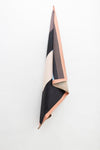Rafael Fuster
Biography

Biography
The work of Rafael Fuster (Murcia, 1978) has been characterized from the outset by a reflection on the limits of perception. A Baroque play with the viewer's eye that questions the relationship between what we see and what exists, the tension between...
Leer más
Economic information
All
No products found
Use fewer filters or remove all
Filter

CAN'T FIND WHAT YOU'RE LOOKING FOR?
We help you.
If you're interested in seeing other available works, we'll contact you without obligation.
Certified works
All works have a Certificate of Authenticity
We are experts
With more than 20 years of experience in collecting and the art market
Pay comfortably
Pay in 3 interest-free installments or in 12 months thanks to Sequra
Online advice
Personalized advice, without obligation, and receive proposals from our experts
JOIN OUR NEWSLETTER

Descubre el fascinante mundo del arte de la mano de expertos
